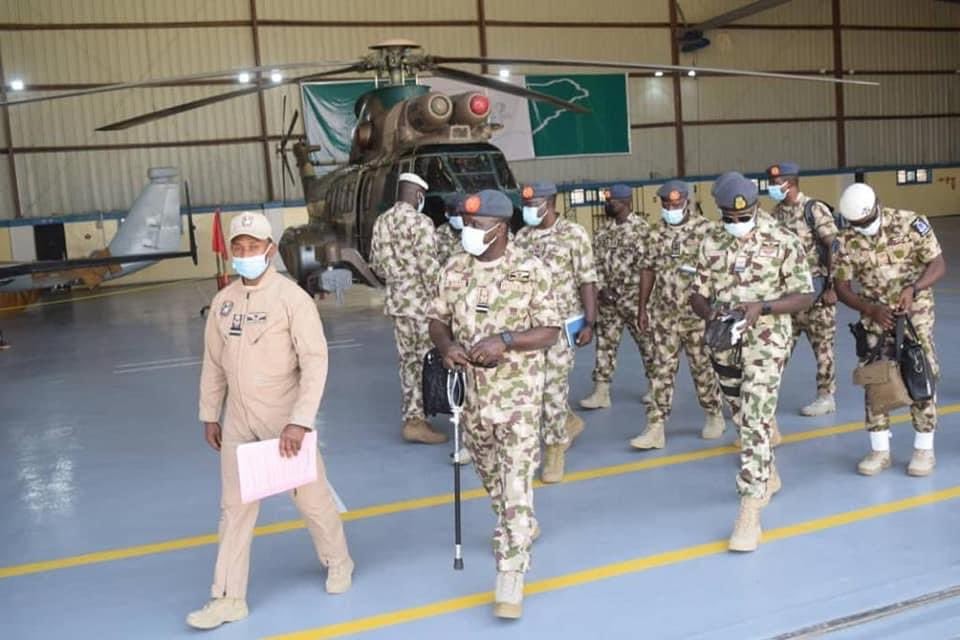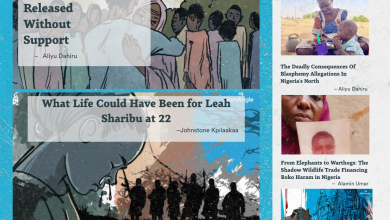A Look Into The Downing Of Nigerian Fighter Jet By Terrorists In Zamfara
As Nigerians wait for the results of the internal investigation into the recent Alpha jet crash in Zamfara, Northwest Nigeria, a transparent inquiry and public engagement into such crashes would provide an opportunity for the Air Force to regain public confidence and reform certain practices.

An Air Force pilot on a combat mission in support of the military campaign in the Northwest was injured after bailing out and descending into one of the most hostile and violent areas in the region.
The Alpha Jet, an advanced trainer and light attack aircraft, was part of the Air Force deployment consisting of rotary and fixed-wing aircraft. They are often assigned to support military onslaught in response to escalating attacks by groups notorious for terrorising communities and commuters on highways.
Airborne platforms also conduct intelligence, surveillance, and reconnaissance missions utilised for targeting enclaves located deep in the region’s numerous Savannah forests.
On Sunday, July 18, a young pilot, Flight Lieutenant Abayomi Dairo, on a solo mission in the twin-seat alpha jet, came under intense enemy fire that required ejection and evading a swarm of adversaries searching for him.
Ejecting from an aircraft is a turbulent process for pilots that involves triggering the ejection mechanism, ignition of charges which blow open the canopy and rocket boosters that blast the whole seat out of the cockpit into the air.
According to the Air Force, the pilot was returning from an air interdiction mission between the boundaries of Zamfara and Kaduna State, when the aircraft was targeted and subsequently crashed in Zamfara.
The authorities had initially denied news of a plane crashing, saying there was no crash in Kaduna and no aircraft left Yola in the northeast for Kaduna.
The incident, however, happened around the Kuyambana (also known as Kwiambana) game reserve in Zamfara, located adjacent Kamuku National Park in Birnin Gwari axis of Kaduna ー an area where the military often conducts reconnaissance missions and targeted strikes at terrorist hideouts.
Upon bailing out and descending into enemy territory, the pilot, suffering from injuries likely sustained during the ejection would have applied his Survival, Evasion, Resistance, and Escape (SERE) skillset designed to improve his chances of survival and extraction in such a situation.
Flypasts by NAF aircraft dispatched for Combat Search and Rescue Mission were instrumental in scaring off the enemy and assisting the pilot to avoid capture and seek refuge in a settlement.
The pilot was reported to have utilised his mobile device for navigation during the encounter.
HumAngle understands that the locals and a traditional leader helped protect the pilot and facilitated contact with the Army after which he was airlifted by an Air Force helicopter.
Hours later, a video surfaced online of the pilot disembarking from a Bell-412 and meeting excited senior Air Force personnel, the Air and Defence Chiefs at the flight line of Kaduna Airbase.
The incident, which marked the second combat-related crash of an Alpha Jet in 2021, has led to concerns on the serviceability of the Dassault of France and Dornier of Germany aircraft estimated to cost between $12 and 15 million. The circumstances that exposed the fast-moving jet – which is capable of reaching a service ceiling of 50.000 feet and speed of 620 mph to ground enemy fire – have been questioned.
NAF’s Alpha Jet fleet comprises the German and French built A and E variants designed for light attack and advance training of pilots, fitted or capable of employing revolver cannon, unguided rocket pods, and freefall bombs for combat missions.
The absence of a sophisticated sensor suite, flexible or smart weapons system on board the aircraft, affects the identification of targets, battlefield effectiveness as well as requiring pilots to use a dangerous and complex process of steep dive-bombing runs to improve accuracy.
This process of diving and flying low exposes the aircraft to rounds from small arms and anti-aircraft guns, raising fears about this vulnerability or other technical and mechanical factors that contributed to the crash.
While an internal investigation process is expected, a transparent inquiry and public engagement into the recent combat and non-combat accidents would provide an opportunity to regain public confidence, reform practices, as well as address underlying factors, limitations and vulnerabilities associated with platforms.
The Air Force recently received the first batch of A-29 super Tucano turboprop light attack aircraft equipped with sensors and a targeting system for enhanced close air support and weapon delivery.

HumAngle has learned that at least one or both Antonov An-124 that recently landed at Yola airport, including one sighted by a passenger, delivered cargo containing equipment for a new Unmanned Combat Aerial Vehicle (UCAV) from China.
The Air Force is expanding the use of UCAV for surveillance and airstrikes, two Wing Loong II UCAV are expected in July as well as two CH-3 and four CH-4 UCAV slated for delivery before the end of 2021.
Support Our Journalism
There are millions of ordinary people affected by conflict in Africa whose stories are missing in the mainstream media. HumAngle is determined to tell those challenging and under-reported stories, hoping that the people impacted by these conflicts will find the safety and security they deserve.
To ensure that we continue to provide public service coverage, we have a small favour to ask you. We want you to be part of our journalistic endeavour by contributing a token to us.
Your donation will further promote a robust, free, and independent media.
Donate HereStay Closer To The Stories That Matter




